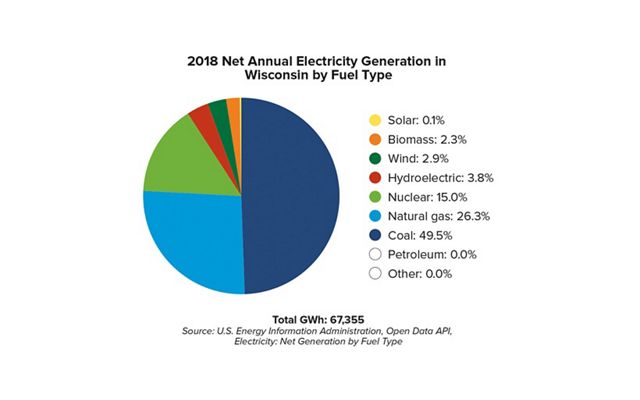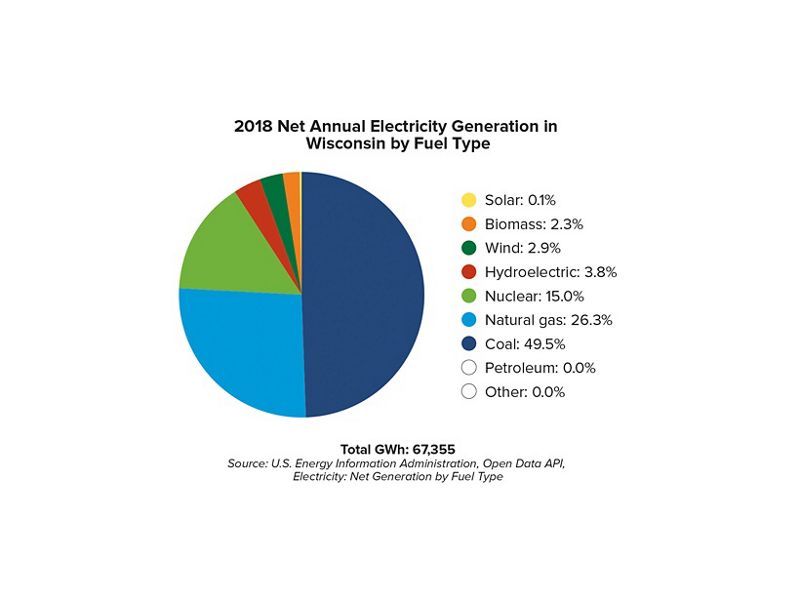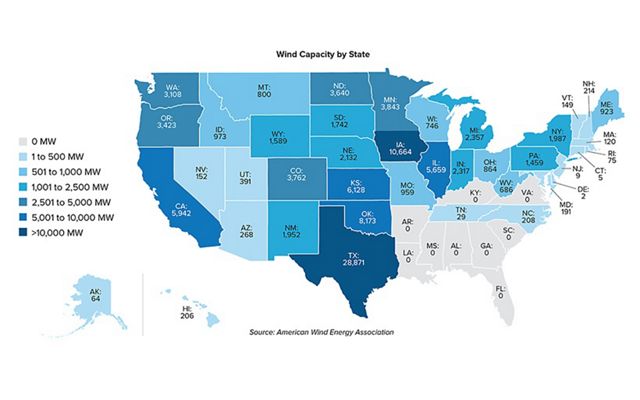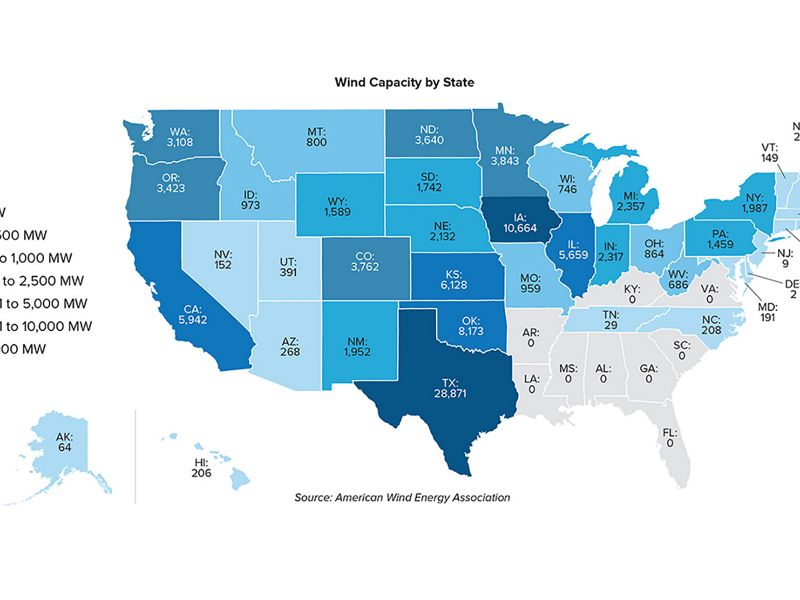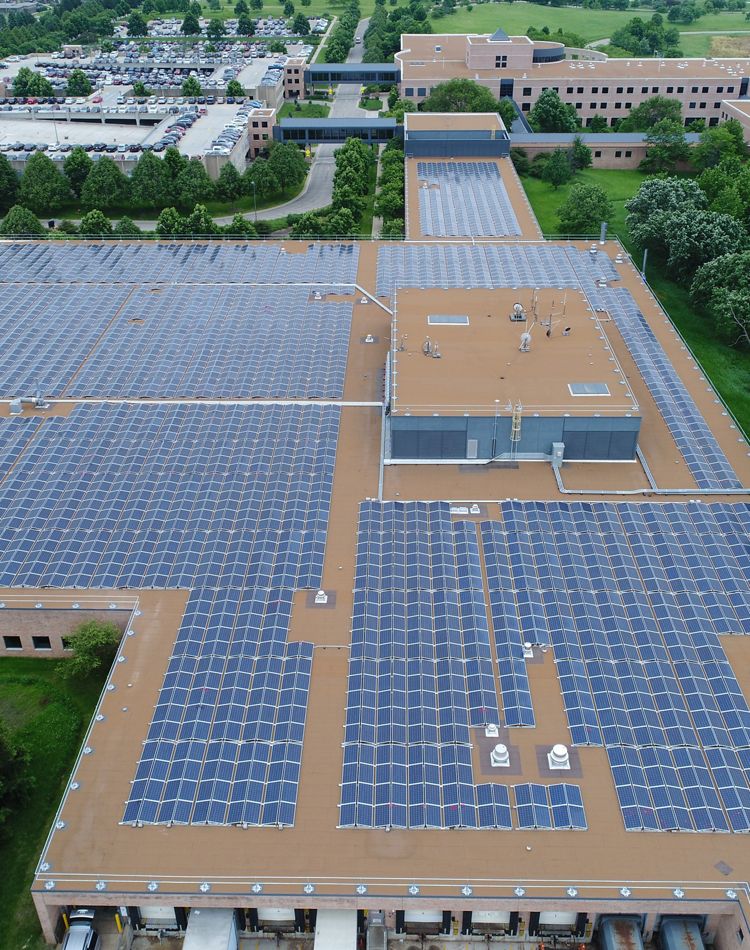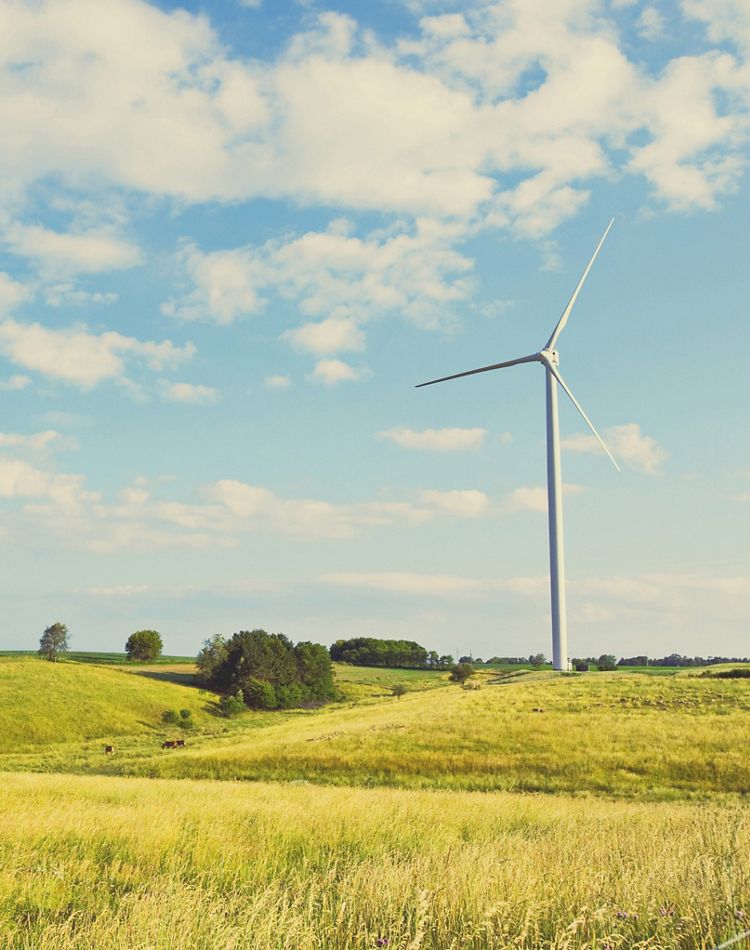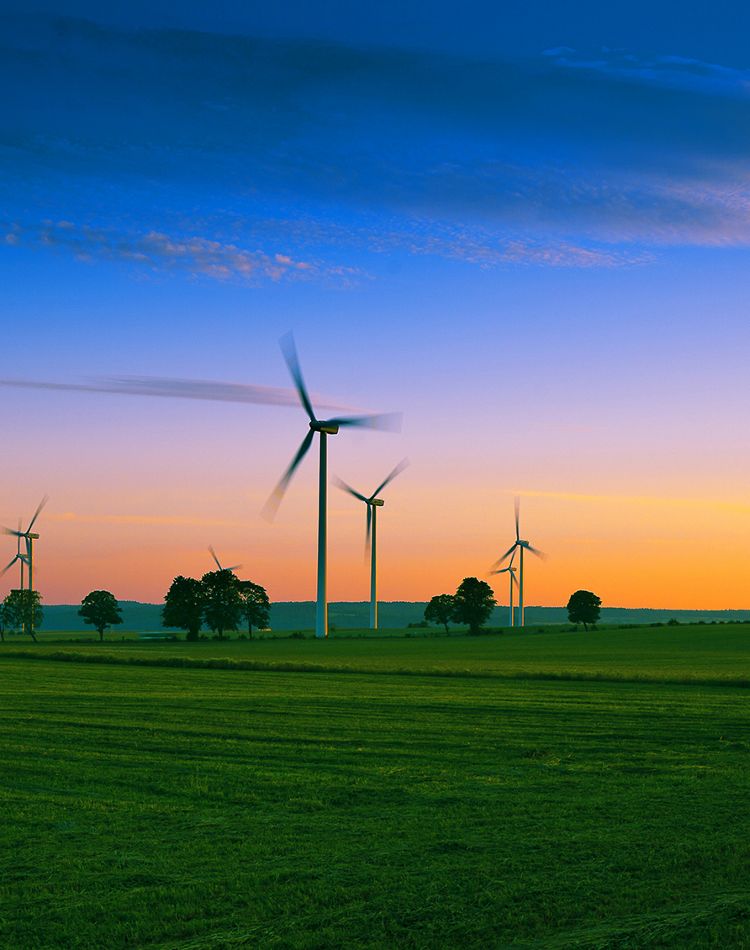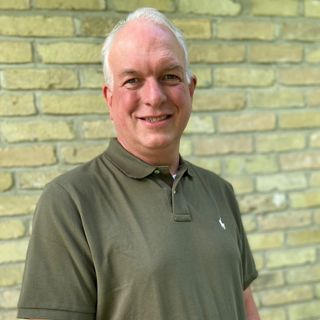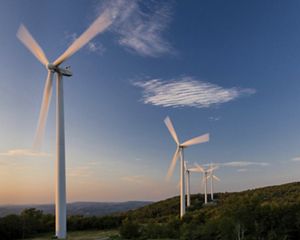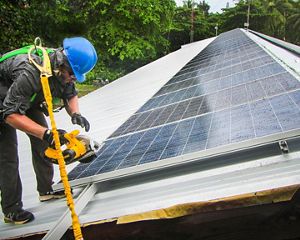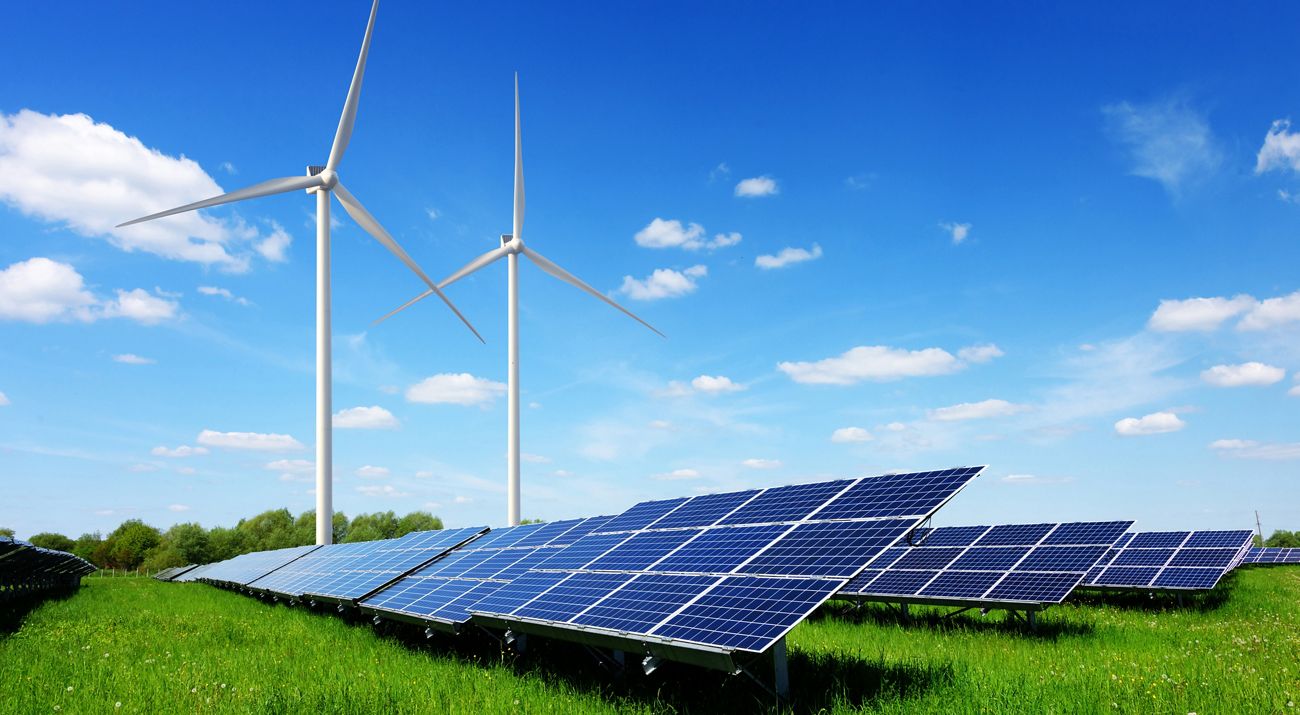
Wisconsin's Renewable Energy Future
Wisconsin's businesses share challenges and opportunities in the transition to renewable energy.
Transitioning to Renewable Energy
Like most other states, Wisconsin is transitioning to renewable energy. There’s broad and growing support for phasing carbon out of energy production and consumption to help mitigate the impact of climate change.
As demand for renewable energy continues to increase, all energy consumed in Wisconsin will eventually be carbon free.
At The Nature Conservancy in Wisconsin, we know that renewable energy can help grow the state’s economy while reducing carbon emissions. Renewables and sustainability opportunities are increasingly important metrics for businesses when deciding where to locate—and where to grow.
The Nature Conservancy in Wisconsin wants to help smooth the transition to clean energy by uncovering the barriers and opportunities, and by ensuring that Wisconsin’s residents, businesses and nonprofit organizations are all represented during the transition.
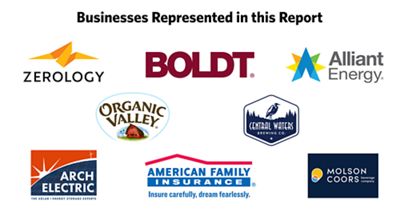
Renewable Energy Report
Learn more about the challenges and opportunities of transitioning WI to renewable energy.
Download the ReportThat’s why we connected with iconic Wisconsin businesses, large and small, from across the state to learn about their experiences. We gathered information about the current state of renewable energy in Wisconsin, their renewable energy programs and plans, the hurdles they face and the opportunities they see.
They told us they need increased consistency, predictability and availability of clean energy from Wisconsin and that:
- Wisconsin is behind in the transition to renewable energy.
- Wisconsin’s economy will benefit from the transition.
- There are simple steps we can take to help pave the way.
- Policy and regulation reform can accelerate adoption.
- We need a public-private partnership—a truly Wisconsin-wide approach—to ensure it works for everyone.
Is Wisconsin being left behind?
Once an early adopter, Wisconsin now lags behind neighboring states.
How will renewables strengthen Wisconsin’s economy?
Green energy jobs are booming.
Forbes magazine reports that renewable energy jobs are booming across America, creating stable and high-wage employment for blue-collar workers. According to the U.S. Bureau of Labor Statistics, solar photovoltaic installers and wind turbine service technicians are the top two fastest-growing occupations, which is projected to continue through 2028. Unfortunately, Wisconsin isn’t leading the way. In 2019:
- There were 249,983 Americans working in solar (source: The Solar Foundation). Wisconsin’s share: 2,871 solar jobs—1.1% of the total.
- There were 120,000 jobs in the U.S. wind industry (source: American Wind Energy Association). Wisconsin’s share: Somewhere between 1,001 to 2,000—or .8% to 1.6% of the total.
The state’s transition to renewable energy is crucial for Wisconsin businesses to attract the next generation of workers—both white collar and blue collar. Wisconsin’s entire workforce will benefit.
Sustainability is already driving the nation’s companies and employees.
From large institutional investors to individual consumers—everyone is looking for ways to improve sustainability and decrease their environmental footprint:
- Of the 200 largest companies in the Fortune Global 500, 94% have sustainability goals.
- In a recent survey of 1,000 employees at large U.S. companies, more than 70% said they’re more likely to choose to work at a company with a strong environmental agenda.
- The five largest U.S. public pension funds alone committed nearly $9 billion to renewables funds in 2018, according to Preqin, a leading provider of data, analytics and insights to the alternative assets community.
Millennials are behind this shift:
- 76% of millennials consider a company’s social and environmental commitments when making employment decisions, according to a Cone Communications study.
- 86% of millennials believe the government should be active in setting a vision and path for driving U.S. energy strategy, per a Deloitte survey.
- Surveys by utilities show that millennials want to be out of coal and into electric vehicles.
Millennials already make up half the U.S. workforce. Wisconsin businesses need to attract millennials, and the state of Wisconsin needs working millennials to sustain the tax base as baby boomers retire.


What can Wisconsin do to pave the way?
Businesses identify barriers to renewable energy adoption.
The Nature Conservancy in Wisconsin heard several recurring themes as we interviewed Wisconsin’s businesses. They told us outdated regulations, inconsistent rules, a “not in my backyard” (NIMBY) attitude and a lack of flexibility in existing programs are preventing more widespread adoption.
Holding Wisconsin Back
Antiquated laws and regulations are putting a hold on the future.
-

Siting Laws
The current version of Wisconsin's laws don't lend themselves to wind generation. In contrast to neighboring states like Iowa, Minnesota, Illinois and Indiana.
-

Interconnection Standards
Interconnection standards are rules allowing residential customers, businesses and nonprofits to generate their own renewable energy and connect it to the grid. Electric cooperatives are encouraged—but not required—to adopt the state standards.
-

Energy Storage
There has been no consideration of the value of batteries, microgrids and other storage-based technologies in the regulatory landscape, despite the fact that energy storage is rapidly approaching market readiness.
Net metering inconsistencies among utilities are hurting statewide adoption.
- Different utilities have different net metering limits for customers producing their own renewable energy and selling it back to the grid. Some limit net metering above 20 kilowatts (kW), and some rural electric cooperatives aren’t set up to purchase excess renewable energy from businesses or residential customers.
- Some utilities that allow businesses to net meter offer low compensation rates when a business overproduces renewable energy. Example: A business buys energy from a utility for 10 cents/kilowatt-hour (kWh), while the utility pays 4 cents/kWh for business-generated renewable energy. This suppresses demand for additional renewable energy and extends the payback period for businesses and nonprofit organizations that want to generate more renewable energy.
- No utility allows businesses with multiple renewable energy facilities to offset their aggregated load.

An increase in renewable energy activity in Wisconsin
Tom Boldt is CEO of Boldt Construction, one of the largest professional construction services firms in the United States, with several offices in Wisconsin and corporate headquarters in Appleton. One of their key markets is building wind, hydroelectric, combined heat and power, and bioenergy facilities.
According to Boldt, “There is an increase in wind farm development activity in Wisconsin. Our customers are asking us to provide pricing for several new developments now, and we expect more to follow. They tell us that the larger, taller wind turbines can be economically built in Wisconsin, and they are in active discussions with the state’s utilities to purchase energy from these projects. As for solar, the costs continue to come down, and we are actively exploring entry into the solar construction market.
“In Wisconsin and many other states, you need strong enough solar and wind resources to allow the technologies to deliver the energy cost effectively. We understand that Wisconsin’s resources have limitations and developers can build in other locations more cost effectively. That said, advances in technologies and a somewhat improving regulatory environment are allowing advancement of some projects. Continued improvement of the state and local regulatory conditions would certainly help increase the number of projects built in Wisconsin.
“For example, why spend more money for less energy in Wisconsin because I have to space wind turbines a greater distance apart?” Boldt asks. “In other states, developers can place them closer together and generate more kW per site. This is the major obstacle for all renewable energy developments – the large tracts of land needed to produce the same amount of energy that fossil plants can produce on substantially smaller tracts. That is part of the price of renewable energy deployment. Increasing the density of wind and solar energy is always more cost effective.”
Getting approval for a hydroelectric plant can also be challenging. “Hydroelectric facilities need area (to create flow volume) and elevation drop (relief) to create energy, and no matter where a hydroelectric plant is sited, you have to meet local, state and federal permitting requirements. I understand there has been some effort to improve the speed at which permitting happens, but it takes a lot of time and money, and there’s no guarantee the project will be approved,” he adds. “So, while Wisconsin has a lot of water resources and the permitting process may be improving, it lacks the area and relief needed to create large hydro plants – and hydroelectric development is very capital intensive and a very long-term investment. In any case, the state’s utilities maintain a commitment to their existing hydroelectric facilities by maintaining the current fleet of dams and generators.”
Boldt says grid support to cover renewables’ intermittency is also important. Expanding the use of combined heat and power, and bioenergy facilities is one way to support the deployment of renewable resources. “Bioenergy facilities require a feedstock to burn and create heat to run boilers, generators and chillers. It is oftentimes difficult to find a continuous and consistent-quality feedstock, though Wisconsin can offer such supplies in limited quantities in certain geographies that can support such developments. These plants can offer energy to the grid when wind, solar and hydro assets cannot.
“In regions where bioenergy plants are not economically viable, combined heat and power facilities supported by cleaner natural gas can offer energy to the grid when wind, solar and hydro assets cannot. This ‘backstop’ is crucial to expanding the deployment of renewable energy assets to make sure our government, industry, and residents have the energy they need. It is important that we keep a focus on reliability of our systems as well as the cost and environmental impacts.”
Businesses need clarity—and a commitment to more renewables—from legislators and regulators.
- There’s a patchwork landscape of utility-provided solar services (aka “green tariffs”) in Wisconsin. Not all Wisconsin utilities offer residents, small businesses and nonprofit organizations the opportunity to purchase utility-generated solar power. This limits their ability to decrease greenhouse gas emissions and reduce their environmental footprint.
- Wisconsin needs clarification on the legality of power purchase agreements (PPAs) with entities other than utilities. According to the Energy and Policy Institute, Wisconsin is one of 15 states where third-party contracts are in a legal gray area. PPAs are important to nonprofit organizations, including local governments and churches, which aren’t eligible for federal incentives because they don’t pay taxes. Third-party private developers can access the federal incentives, which enable them to offer renewable energy at a lower price.
- Wisconsin needs clarification on the electric vehicle (EV) charging infrastructure from the Public Service Commission. In the state’s current biennial budget, $10 million from the Volkswagen Diesel Emissions Environmental Mitigation Trust is allocated to installing new EV charging stations. An adequate infrastructure will help eliminate range anxiety, encourage more residents to purchase EVs, positively affect tourism and encourage new businesses to locate in Wisconsin. The PSC should clarify their expectations for EVs, including rates, incentives and ownership of assets.

Accelerating adoption of solar
Organic Valley in La Farge is the nation’s largest farmer-owned organic cooperative, with more than 2,000 farmers. Organic Valley now powers all their production plants and business facilities with 100% renewable electricity.
“We started by putting up our own capital and installing rooftop systems,” says Nicole Rakobitsch, Director of Sustainability at Organic Valley. “Then, we partnered with Gundersen Lutheran to install a small wind farm—the first community wind farm in Wisconsin. That got us about 60% of the way to 100% renewable.”
The next step was transitioning the remaining 40% “without putting up our own capital. We worked with BluEarth Renewables. They put up the capital, they built the solar farm, they sell the electricity to local utilities and we purchase the renewable energy credits (RECs).
“There was a lot of interest in this from the rural electric utilities. There are 10 solar farms built in the portfolio, and we sponsor three of the sites. It’s benefiting several other REC purchasers, including the city of Madison,” Rakobitsch adds.
Organic Valley also helps their farmers transition to on-farm solar. Rakobitsch says most farms are installing renewable energy to offset their own consumption. “Typically, they aren’t allowed to put in a system larger than their own needs.
“That’s why we’d like Wisconsin to follow Minnesota’s lead and allow third-party ownership of solar on farms and homes,” she says. “This would accelerate the adoption of renewables because homeowners, farmers and other businesses who can’t afford the upfront installation costs could still go solar.”
All sides need consideration, collaboration and innovative thinking.
- Utilities working to increase renewable energy need to keep the cost of electricity affordable. As Wisconsin utilities transition from fossil fuel to renewable energy and modernize the grid, the transition is expensive. Grid reliability, stability and affordability must remain priorities.
- As large utilities invest in their own renewable energy generation, there is little incentive to connect renewables from third parties. The higher the amount of renewable energy fed to the grid, the more batteries become critical to maintain control—and batteries are expensive.
- Businesses are looking for a shorter investment time frame than a 20-year commitment to utility-owned renewable energy programs. Whether it involves buying RECs from a utility-owned off-site renewable energy facility or hosting renewables on-site and receiving a lease payment, the 20-year term is not ideal for businesses looking for a shorter-term ROI on renewable projects.
- One size can’t fit all. While a 20-year ROI may be acceptable to smaller companies and nonprofit organizations, it’s not such an easy sell at the larger publicly traded companies.
We understand that the different types of utilities in Wisconsin—investor-owned, municipal utilities and electric cooperatives—have different priorities and capabilities regarding increasing renewables. And those differences must be considered as Wisconsin updates renewable energy regulations.
We also acknowledge that utilities’ retail rates include more than the wholesale cost of energy. They involve recovery for significant infrastructure costs, the cost of monitoring and maintaining the bulk power electric system, and the cost of reserves and ancillary services to ensure the system is reliable. Utilities need to procure resources and capacity to serve customers 24/7.
The new regulatory equation must balance what’s best for Wisconsin’s residents, businesses, nonprofit organizations and our environment, while protecting the stability of the energy grid and keeping electricity affordable. Threading that needle will require a public-private partnership.


What policy and regulatory reforms would help?
Specific suggestions and recommendations from Wisconsin businesses.
-
This incentivizes utilities to either increase their own renewable energy generation or encourage their customers to add renewable energy generation and sell their excess generation to the grid.
-
Because of the current uncertainty in the public utility law, new solar installations are limited to a utility’s customers. Third-party solar companies are kept out of the market. This makes it hard for smaller customers (i.e., local governments, schools, churches, nonprofit organizations) that want to install solar to get it done because if their utility doesn’t offer a PPA, customers have to absorb the up-front costs. The PSC should clarify the public utility law and differentiate between public utilities regulated by the PSC and unregulated private companies.
-
Vast improvements in equipment performance and specifications since 2004 are not reflected in Wisconsin’s interconnection requirements and procedures. Failure to align PSC 119 with Institute of Electrical and Electronics Engineers (IEEE) and Underwriters Laboratories (UL) certifications adds costs and time to installations, and current provisions don’t address storage technologies.
-
While providing a standard, transparent, simplified review process – to encourage businesses to increase production of renewable energy. Net metering ceilings and terms of service vary widely among utilities. Problems include canceling net metering and unreasonable compensation for renewable energy exported to the grid. The PSC should standardize parallel generation terms of service.
-
Meanwhile, incredible progress has been made in renewable energy technologies. It’s time for Wisconsin’s regulations to catch up with reality.

Net metering rules
Paul Graham owns the Central Waters Brewing Company in Amherst. The brewery has a solar thermal (hot water) array and three photovoltaic solar arrays to offset its natural gas consumption. “Right now, about 55% of our energy comes from renewable sources. If we could make the numbers work, we’d already be 100% renewable.”
He explains the net metering issues they ran into when expanding. “If you’re net metered here, if your system is under 20kW, when purchasing power from the power company, they’ll charge you 11.2 cents per kW hour. If you’re overproducing, they’ll pay you that amount, so it’s a nice incentive for small-scale systems.
“But now that we’re a larger renewable energy producer, we’re no longer net metered. So now when we’re underproducing, we pay the utility 11.2 cents per kWh, but we’re only getting paid 2.6 cents per kWh when we’re overproducing.”
Graham says Central Waters produces beer five days a week. “Because we don’t run seven days, we don’t have large energy consumption on the weekends. Our problem is, to invest in the infrastructure to get us to 100% renewable on Monday through Friday, we’ll be overproducing on Saturday and Sunday.
“I think there needs to be more give and take between the utilities and businesses with that 20kW cap for net metering. We could encourage larger renewable energy systems on smaller businesses if there wasn’t a cap or if caps are raised.”


How can we guarantee that renewables work for all Wisconsinites?
A smooth transition to clean energy will require a public-private partnership.
State agencies and utilities, businesses, nonprofit organizations and residents must work together to achieve the goal while protecting the reliability of the state’s energy grid and guaranteeing Wisconsinites have access to affordable energy. That starts by coming together, listening to all sides and aligning on shared strategies and objectives to meet the goal.
- Working through Wisconsin’s Task Force on Climate Change, established in 2019, is a logical step. The task force is 32 members strong and already shining a spotlight on innovative thinking around climate change. Renewable energy will obviously be part of that solution. We hope the recommendations that spring from the task force will be acted upon—and will help catapult Wisconsin into the lead in renewable energy.
- Establishing a Wisconsin Green/Infrastructure Bank could also help us make the transition. This would be a public bank that partners with private lending institutions to fund upfront costs of clean energy projects and improvements. Several states have already established such green banks. For example, Michigan’s green bank, Michigan Saves, is the nation’s first independent nonprofit green bank. In 2018, it provided more than $172 million in financing for energy efficiency and renewable energy improvements. Michigan Saves’ goal is to provide $1 billion in green financing by 2023.
- Providing training funds for workforce development and creating a renewable energy curriculum for technical colleges in the state would help prepare the next generation of Wisconsin workers.
- Increasing the incentives available for homes and businesses through Focus on Energy to more closely match incentives of surrounding states could help increase renewable energy generation in Wisconsin.
We can reposition Wisconsin to lead in renewable energy by reworking outdated regulations and fostering collaboration among utilities, the PSC, businesses, nonprofit organizations and residents.
Wisconsin doesn’t have to reinvent the wheel. We just have to decide to move it forward.
Wisconsin’s Renewable Energy Future
The state stands to gain economic advantages and environmental benefits by transitiong to renewable energy. Ready to learn more?

